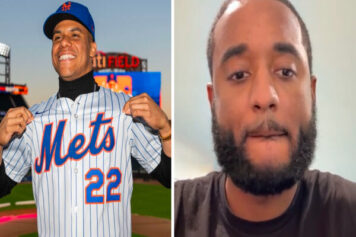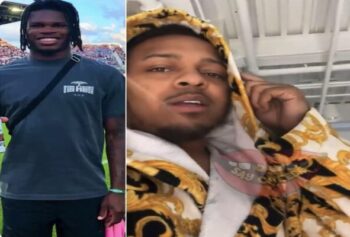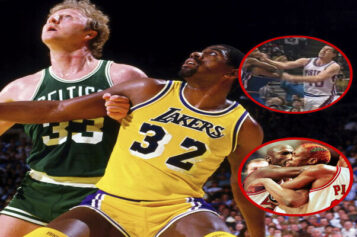Do you remember where you were when you first heard What’s The 411?
For me, it invokes images of a New York City summer drenched in sunshine and neighborhood sophistication. Block parties and the raw energy of a still-conscious East Coast music scene where dancing, love, and urban romance were defined with gritty poetic innocence.
The road that led Mary Jane Blige into the office of Uptown Records was not a typical one, but was a matter of fate nonetheless. Blige didn’t sit outside the label offices begging for her demo to be heard. Her tape made it into the hands of CEO Andre Harrell through a family friend.
She became the youngest artist at 18 years old and the first woman on the cutting edge record label’s roster. At the same time, a young intern named Sean “Puffy” Combs decided to abandon his college career at Howard University and pursue an opportunity at Uptown Records full time. His ability to align style with attitude and blend musical genres led him to become an A&R and executive producer for new acts on the label. Blige was put in his pocket like an unpolished gold watch and he knew exactly what to do with her.
Combs assembled his now trademark consortium of music producers to develop a signature sound and stylists to develop her patented look. Ultimately, the vision was clear and a label for a sub-genre emerged: Hip Hop Soul.
The meshing of the deeply felt tonality of balladeers with Hip Hop cadence and culture began, and it would begin a metamorphosis in the way we interpreted music for the better. It was edgier than New Jack Swing, with a deeper vocal texture that only Blige’s unique experience as a New York City native could deliver.
You remind me-Mary J. Blige
4 off her LP what’s the 411?
The first single, You Remind Me, was conjured up by producer Dave “Jam” Hall and it was featured fittingly on the soundtrack of the movie Strictly Business that further defined the emerging ’90s Hip Hop soul culture. The song became Blige’s first Billboard Top 40 hit and became number one on the Hot R&B singles chart in 1992.
Mary J blige – Real Love
Mary J. Blige 1992 video from “What’s the 411?” album
Next came Real Love, which utilized a sample from Audio Two’s classic song Top Billin, which was a known party starter in the late ’80s. Producer Corey Rooney, whose parents were in an R&B band in the ’60s and ’70s, was from Queens and understood the convergence of Hip Hop and Soul.
The co-producer was Mark “Prince Markie Dee” Morales of The Fat Boys fame, and the duo crafted a timeless boom-bap classic with rhythmic overtones that shaped the future of R&B music. The single went gold in four months, selling 500,000 copies and giving Blige her first song on the Billboard pop charts out of the gate. It peaked at number 7 on the Billboard Hot 100 list.
Mary J. Blige – Reminisce
Music video by Mary J. Blige performing Reminisce. (C) 1992 Geffen Records
When Reminisce dropped, people were aware that Blige could sing. But the first 30 seconds of the song, where she rips raw vocals over no real melody and is joined by what seems like a church styled chorus is nothing short of magical.
Kenny Greene, the former lead vocalist of the group Intro, teamed with Dave Hall for this gem. Adding a soulful, stripped down melody over a sample of MC Lyte’s Stop, Look, and Listen was a hybrid that further convinced you that Blige indeed was the Queen of Hip Hop Soul.
Mary J Blige – Sweet Thang
Whats the 411
Blige then ambitiously took on Rufus featuring Chaka Khan’s seminal hit Sweet Thing. What bellowed through the airwaves was a unique take on a classic that invoked a different kind of ache from love’s pull on your soul.
Where Khan was more a soulstress, Blige’s vocals held a tell-it-like-it-is street frankness that hit home and resonated with the youth of her generation.
Mary J. Blige – Love No Limit
Music video by Mary J. Blige performing Love No Limit. (C) 1993 Geffen Records
The last single of the 12 tracks on the album, Love No Limit, pushed Blige into a jazzy spectrum where she almost scatted the words out, a la Sarah Vaughn. It was risky and avant garde, but deliciously urban.
Blige seems to dip an octave lower to deliver a performance Nina Simone would have tipped her hat to. The song is deeply rich with a near baritone that drenched the melody with jazz-inspired quirkiness. It was pure bliss and yet another scene stealer from an album full of hits.
Changes i’ve been going through-Mary J. Blige
11 off her LP what’s the 411?
Songs like I Don’t Want to Do Anything featuring K-Ci of Jodeci, Slow Down, My Love and Changes I’ve Been Going Through were all solid cuts, laying further credence to Blige’s arrival in the music world.
Appearances by Busta Rhymes and the answering machine intro played into the dramatic feel of her world that he was not typical of your average R&B singer. Mary was a ghetto diamond now polished, but still playing the block.
Mary J. Blige feat. Grand Puba – Whats The 411
Mary J. Blige feat. Grand Puba – Whats The 411
The pairing with Grand Puba of Brand Nubian fame for the title track What’s The 411? defined the boy-meets-girl urban legend, giving perspective and game from each side. Puba asks Blige matter-of-factly: “Yo what’s the 411, hun? You got it going on?”
Blige proudly responds, “Ayo I’ve got it going on, hun.”
Puba’s big homie meets cool uncle persona fit well with the young sass of Blige and paints a picture of slightly older guys trying to spit game to young but wise beauties. It was the precursor to DMX’s more drug culture referenced How’s It Goin’ Down but just as effective at providing a glimpse into the rarefied world of African-American, youthful urban romance and mating ritual power structuring.
What’s The 411? made Blige a star and solidified Combs’ reputation as a hit maker. Adorned in baggy jeans, overalls, bandanas and dark sunglasses, Blige delivered strength to women and changed the narrative of the doe-eyed R&B singer.
With an edge that has been replicated by artists like the late Aaliyah but never perfected, Blige still stands alone in the sub-genre of Hip Hop Soul to this day. Her signature voice evokes a pain within the vocals that we all have felt, and cannot seem to get enough of.
To the R&B artists of today, I can only ask, What’s the 411 hun? You got it going on?



